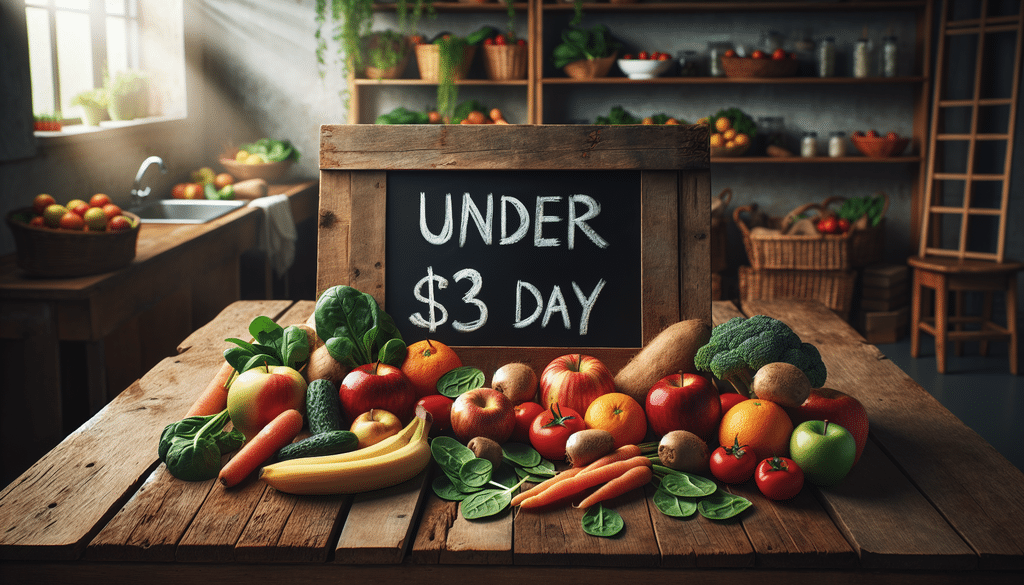Eating healthy doesn’t have to be a luxury, even when you’re on a tight budget. With rising food costs, many people believe that nutritious meals are beyond their financial reach. However, there are numerous affordable fruit and vegetable options that can be enjoyed for less than $3 daily. In this guide, we’ll explore creative ways to incorporate these budget-friendly foods into your diet, ensuring you stay healthy without breaking the bank.
Why Choose Fruits and Vegetables?
Adding fruits and vegetables to your daily meals is essential for a balanced diet. These foods provide a wealth of essential nutrients, including:
- Vitamins and minerals: Support your immune system and overall health.
- Dietary fiber: Aids in digestion and helps maintain a healthy weight.
- Antioxidants: Protect your body from damage caused by free radicals.
Furthermore, numerous studies indicate that a diet rich in fruits and veggies can reduce the risk of chronic diseases such as heart disease, diabetes, and some cancers.
Affordable Fruits and Vegetables Under $3 Daily
Let’s take a closer look at some budget-friendly options to keep your diet vibrant and varied.
Seasonal Fruits and Vegetables
Choosing fruits and vegetables that are in season is one of the easiest ways to save money. Seasonal produce not only tastes better but is also more affordable due to local abundance.
- Apples: Available in the fall, apples offer various benefits and can be used in numerous dishes. They are rich in fiber and Vitamin C.
- Carrots: Versatile and cheap, carrots can be used as a raw snack or in cooked dishes. High in beta-carotene, they promote good vision.
- Squash: Many varieties are available in the fall, and they’re rich in vitamins A and C.
Frozen and Canned Options
When fresh produce is not an option, frozen and canned fruits and vegetables are excellent and affordable alternatives. They are typically preserved at peak freshness, so they retain most of their nutritional value.
- Frozen Broccoli: A staple vegetable that can be included in stir-fries, pasta dishes, or used as a side. It’s rich in vitamins C and K.
- Canned Tomatoes: There’s no shortage of uses for tomatoes in soups, sauces, and casseroles. Opt for no-salt-added versions when available.
Bulk Buying
Purchasing fruits and vegetables in bulk can yield significant savings. Look for specials that encourage buying in large quantities without sacrificing quality.
- Bananas: Found in most bulk produce sections, they’re easy to transport and fill you with potassium and vitamin B6.
- Onions: Essential for flavoring dishes without adding many calories.
Meal Planning Tips
A bit of planning goes a long way in eating healthy on a budget. Here are some strategies to consider:
Prepare in Advance
Prepping meals at the beginning of the week can provide organization and control over your eating habits. For example, cutting up your fruits and vegetables as soon as you get home can encourage you to eat them as snacks throughout the week.
Mix and Match
Combining affordable fruits and vegetables with staples such as rice, pasta, or grains can maximize your expenses. This not only enhances the nutritional content but also makes your meals more satisfying.
Utilize Leftovers
Repurpose leftovers into new meals to ensure nothing goes to waste. For example, leftover vegetables can be tossed into an omelette or used as a pizza topping.
Create a Shopping List
Before heading to the store, write a shopping list to help you stay focused and avoid impulse buys. Stick to your budget by prioritizing items based on nutritional needs and economic value.
Conclusion
Eating healthy on a budget might seem challenging, but it’s entirely achievable with the right mindset and resources. By focusing on affordable fruits and vegetables, such as those listed above, and implementing smart shopping and meal prep strategies, you can enjoy a nutritious diet without overspending. With just a bit of effort, you’ll not only feed your body the nutrients it needs but also set a positive example for an economical yet healthy lifestyle.





